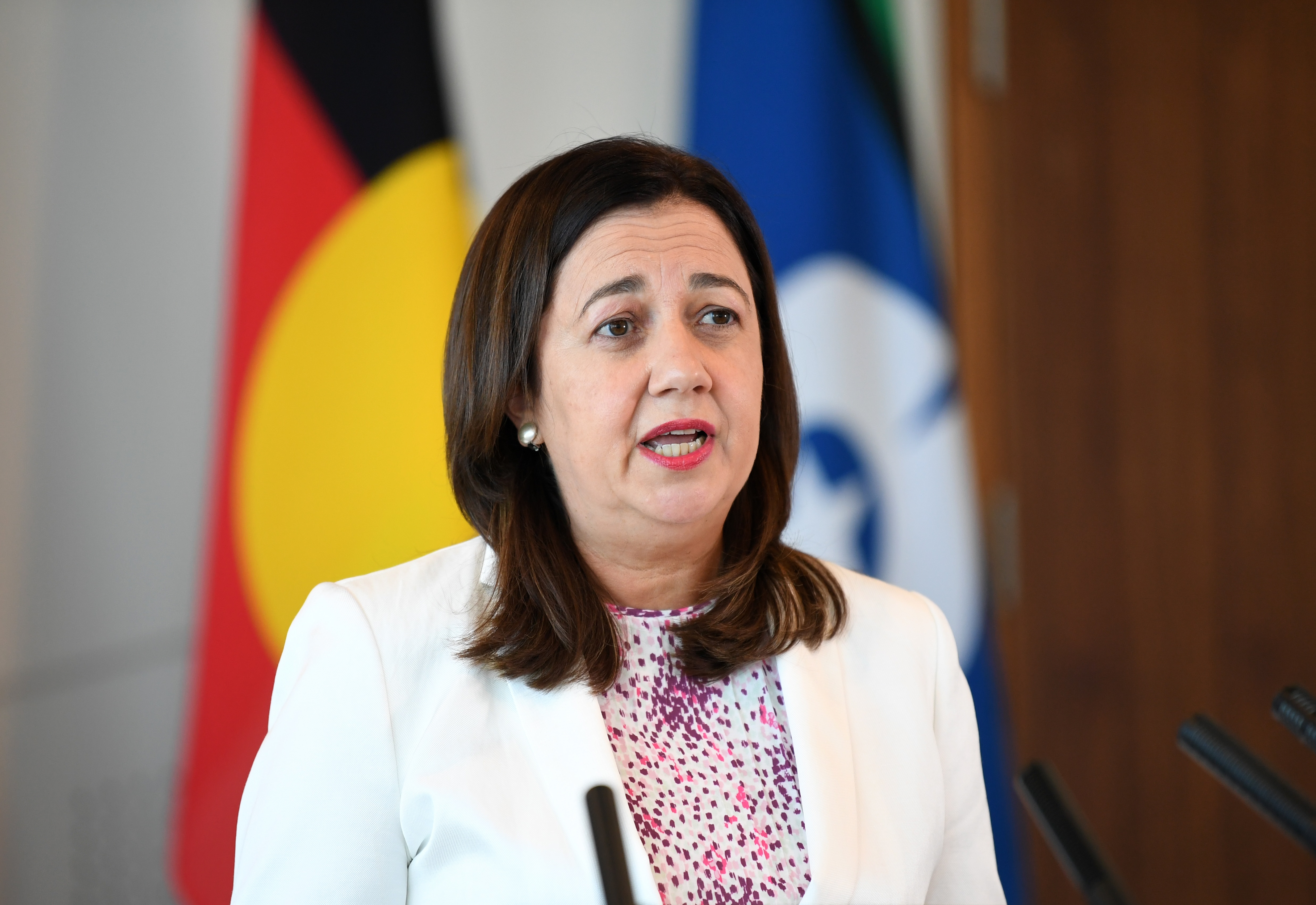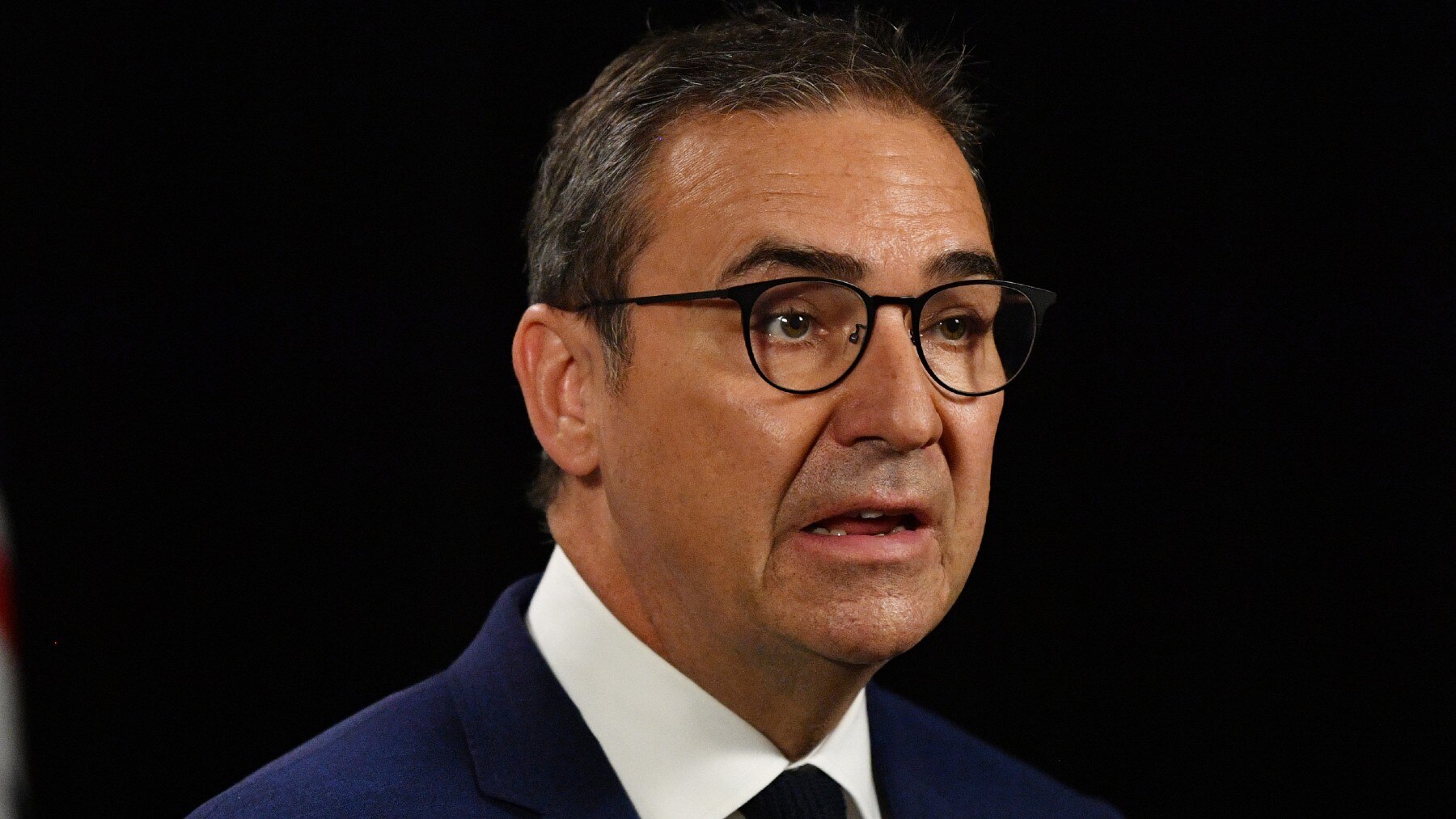The Northern Territory and the ACT have become the latest jurisdictions to impose travel restrictions on visitors from Greater Sydney, as a coronavirus outbreak in the NSW capital continues to grow days out from Christmas.
It follows earlier announcements on Sunday that Victoria and Queensland will shut their borders to people travelling from the region, as the outbreak grew to around 70 cases overnight.
Victoria’s border closure will come into effect from midnight on Sunday, with Premier Daniel Andrews declaring the entire Greater Sydney region – including the Central Coast and the Blue Mountains – a red zone.
Anyone who enters the state after that time will be subjected to 14 days of hotel quarantine.
Returning Victorians have an additional 24 hours to make the trip home, where they will be expected to self-isolate for 14 days at home and get tested.
Those arriving after midnight on Monday will also be subjected to hotel quarantine arrangements, but they will not be expected to pay for it.
An additional 30 cases were recorded in NSW in the 24 hours to 8pm on Saturday, taking the Northern Beaches outbreak to 70. The majority – 28 – were linked to the Avalon cluster.
Mr Andrews said Victoria’s significant new step was a “difficult decision, but it is the appropriate decision”.
While new cases were localised to Sydney’s Northern Beaches, he said, it was clear transmission had already spread to other parts of Sydney.
“With so many exposure sites, a growing number, with every chance that there are people who have this virus who have not yet been tested, have not yet been contacted and are not necessarily staying away from others, there could be many more cases, not just in the Northern Beaches but in other parts of Sydney,” the Victorian premier said on Sunday.
Mr Andrews said Christmas was a “dangerous time” when people were moving about in high numbers and his priority was protecting Victorians.
“All of those in Greater Sydney and the Central Coast, please do not come here,” he said. “You must stay in your state to keep Victorians safe … and as far as Victorians are concerned, do not travel to Sydney.”
The border closures would remain in place for “as long as they needed to”, he added, and would not be lifted when the current Northern Beaches lockdown expires at midnight on Wednesday.
The rest of NSW remains a green zone, though Mr Andrews warned that could change.
All NSW residents require a permit to enter Victoria, with those issued a permit in the last 24 hours asked to reapply due to the change in circumstances, the premier added.
The road border will be a hard border, he said, though border communities would have freedom of movement.
DHHS Deputy Secretary Jeroen Weimar said 35 flights carrying 3,400 passengers were expected to arrive in Victoria from NSW on Sunday ahead of the deadline.
“We will meet them and ensure they have the right permit and the right to be here,” Mr Weimar told reporters on Sunday.
Victorians returning home from Monday will also need to apply for an exemption permit, which will be available from Sunday night on the Service Victoria website.
Victoria has gone 51 days without a locally-acquired case of COVID-19.
Queensland follows suit in shutting its border
Queensland authorities also on Sunday announced the state will close its border to residents from Greater Sydney, amid “escalating” cases in Sydney.
From 1am on Monday, Greater Sydney will be declared a COVID-19 hotspot for Queensland.
Anyone who has been in Sydney, the Blue Mountains, the Central Coast and the Illawarra-Shoalhaven since 11 December will not be allowed into the state without an exemption. If granted, they will be required to go into hotel quarantine for 14 days.
Queenslanders will have another 24 hours – until 1am on Tuesday – to get back home but will need to be tested for the virus and quarantine in their home, if suitable, for 14 days.
“If you are from Greater Sydney, now is not the time to travel to Queensland,” Queensland Premier Annastacia Palaszczuk said.
“We love you, we want you have to have a peaceful Christmas at home, and hopefully in the months to come, we’ll be able to welcome you back to our wonderful Sunshine State – but now is not the time.”
The premier said the state will reintroduce road checkpoints at the NSW border and the state’s airports, three weeks after they were removed.
Deputy Police Commissioner Steve Gollschewski said the checkpoints will be set up as soon as possible.
“Anyone that’s in Sydney now thinking, ‘I can drive through to Queensland and slip through’, they will probably find a checkpoint by the tie they get here,” he said.
Northern Territory shuts its border immediately
The Northern Territory has effectively shut its border to Greater Sydney travellers, effective immediately, Acting Chief Minister Nicole Manison said on Sunday afternoon.
People from Sydney, the Blue Mountains, the Central Coast and the Illawarra will be ordered into 14-day quarantine on arrival in the NT.
“We’ve said that our number one priority is to protect the lives of Territorians, and that if we had to, we would go hard, wide and early,” Ms Manison told reporters. “And we’d act quickly and today we have again.”
She said that the restrictions are effective immediately, leaving passengers on an incoming flight from Sydney with a tough choice.
When they land, they’ll be given the option to go into 14-day quarantine or fly straight back to Sydney.
ACT bars travellers from Greater Sydney
The ACT joined other jurisdictions in restricting travel to and from Greater Sydney.
From midnight on Sunday, the ACT will require anyone coming from Sydney, the Central Coast, Illawarra-Shoalhaven and Nepean Blue Mountains to enter quarantine.
“If you are not an ACT resident and have been in any of these places, our message is simple … do not travel to the ACT,” ACT Chief Health Officer Kerryn Coleman told reporters on Sunday.
Anyone in the same household as the traveller will also be required to quarantine, she said.
ACT Health will not be considering exemption requests for non-residents coming from these regions, except in extreme extenuating circumstances, Dr Coleman added.
“I do understand that this will be difficult for many people and we definitely don’t take these decisions lightly.
“While we will not have the restrictions in place any longer than we need to, we need the community to be prepared, this is likely to continue over Christmas and potentially into the New Year.”
South Australia tightens border rules
South Australia will also require residents of Greater Sydney to quarantine for 14 days from midnight on Sunday, while those from the Northern Beaches have been banned from entering the state.
People from regional NSW will not require quarantine but everyone from the state will be tested on arrival with testing stations established at border checkpoints.
“We don’t take these decisions lightly,” SA Premier Steven Marshall said. “But in this instance we believe that this is the best way we can protect South Australia from any seeding into our states, especially as we lead up to Christmas.”
Western Australia became the first state to reinstate its hard border with NSW on Saturday night, with Premier Mark McGowan upgrading WA’s “low-risk” rating for the state to “medium-risk”.
From midnight on Saturday, the only people from NSW able to fly into WA are those with special exemptions.
Tasmania also requires visitors from greater Sydney to undergo a mandatory 14-day quarantine.
NSW Premier Gladys Berejiklian has warned current restrictions could be extended beyond Wednesday as the number of new cases continues to rise.
With additional reporting by AAP.
People in Australia must stay at least 1.5 metres away from others. Check your jurisdiction’s restrictions on gathering limits.
If you are experiencing cold or flu symptoms, stay home and arrange a test by calling your doctor or contact the Coronavirus Health Information Hotline on 1800 020 080.
News and information is available in 63 languages at sbs.com.au/coronavirus. Please check the relevant guidelines for your state or territory: NSW, Victoria, Queensland, Western Australia, South Australia, Northern Territory, ACT, Tasmania.








